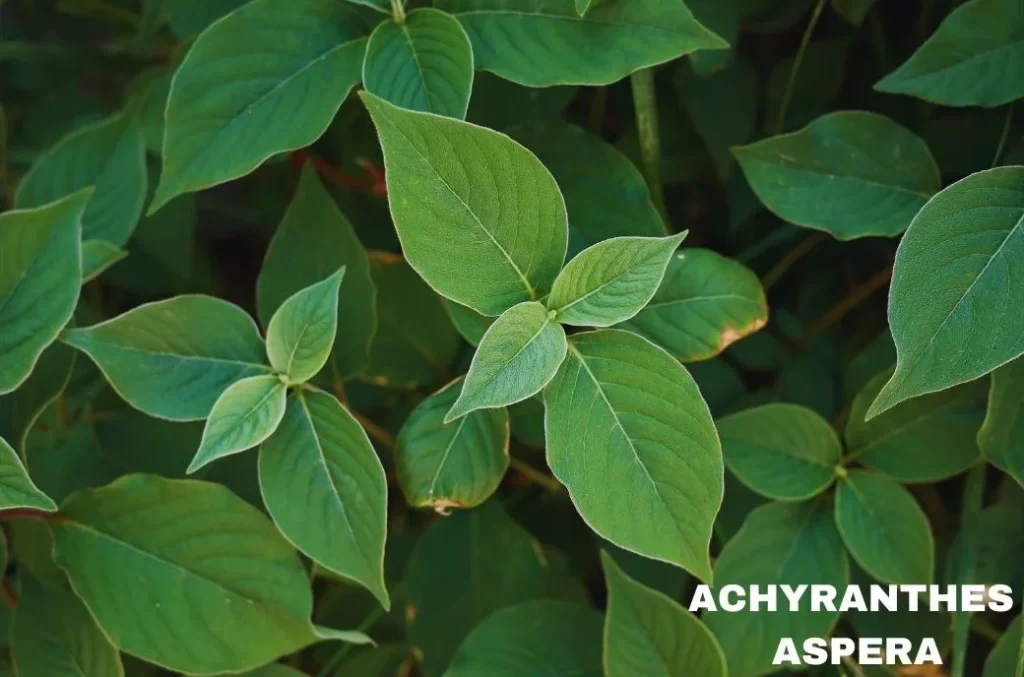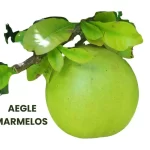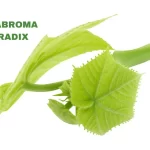Achyranthes aspera, commonly known as Apamarga, is a medicinal plant renowned for its diverse therapeutic properties.
It belongs to the family Amaranthaceae and is widely used in traditional medicine systems for treating various ailments.

SOURCE INFORMATION
Scientific Classification
- Kingdom: Plantae
- Family: Amaranthaceae
- Genus: Achyranthes
- Species: Achyranthes aspera
Apang, Latjira, and Aghada are different local names or vernacular names used to refer to Achyranthes aspera, commonly known as Apamarga.
Dr. S.K. Ghosh was the first individual to conduct a proving or experimental study involving Achyranthes aspera for its medicinal properties.
Kutri, Na-yurivt, and Apa-khare are also likely to be vernacular names used in different regions to denote Achyranthes aspera.
Origin
- Plant Source: Achyranthes aspera, commonly known as Apamarga, is a species of plant belonging to the family Amaranthaceae.
- Geographical Distribution: It is widely distributed across tropical and subtropical regions, including parts of Asia, Africa, Australia, and the Americas.
- Habitat: Apamarga typically grows in various habitats such as plains, wastelands, roadsides, and cultivated fields. It is known for its hardiness and ability to thrive in diverse environmental conditions.
Interesting Facts
- Traditional Medicinal Use: Apamarga has a long history of traditional medicinal use in Ayurveda, Siddha, and other indigenous medical systems.
- It is valued for its diverse therapeutic properties and is used to treat various ailments.
- Cultural Significance: In many cultures, Apamarga holds cultural and religious significance.
- It is often used in rituals, ceremonies, and traditional healing practices.
- Botanical Characteristics: Achyranthes aspera is a perennial herbaceous plant characterized by its erect stem, lanceolate leaves, and small greenish-white flowers.
- It produces small, ribbed seeds enclosed in capsules.
- Phytochemical Composition: The plant contains various bioactive compounds, including alkaloids, flavonoids, saponins, and tannins, which contribute to its medicinal properties.
Current Applications
- Apamarga continues to be utilized in modern herbal medicine and pharmacology, with ongoing research exploring its potential therapeutic uses.
- Its pharmacological activities include anti-inflammatory, analgesic, antidiabetic, antimicrobial, antihypertensive, and hepatoprotective properties, among others.
- Extracts and preparations derived from Apamarga are used in various forms such as teas, tinctures, powders, and topical applications to address a wide range of health conditions.
DRUG PATHOGENESIS
- Achyranthes aspera exhibits astringent, diuretic, and diarrheal properties.
- It is used for treating dysentery, diarrhea, menorrhagia, and the adverse effects of dog and snake bites.
KEY CHARACTERISTICS
- Effective for abdominal symptoms such as acute diarrhea, cholera, and excessive thirst.
- Skin manifestations include boils, carbuncles, and foul swellings.
- Thready pulse may be observed in patients.
DOSE
- Mother-tincture, 3x, 3, 6 are the preferred potencies.
Frequently Asked Questions
What are the main clinical uses of Achyranthes aspera?
- It is used for diarrhea, dysentery, menorrhagia, and the effects of dog and snake bites.
What are the key characteristics of its abdominal symptoms?
- These include watery stool with mucus, stomach pain, nausea, and vomiting.
What potency is commonly recommended for Achyranthes aspera?
- The mother-tincture, 3x, 3, 6 are often preferred for its administration.
Meaning of Difficult Words
- Astringent: Substance causing tissues to contract, often used to stop bleeding or diarrhea.
- Diuretic: Substance promoting the production of urine.
- Menorrhagia: Excessive menstrual bleeding.
- Carbuncles: Painful clusters of boils on the skin.
- Thready pulse: Weak and barely perceptible pulse.













Leave a Reply